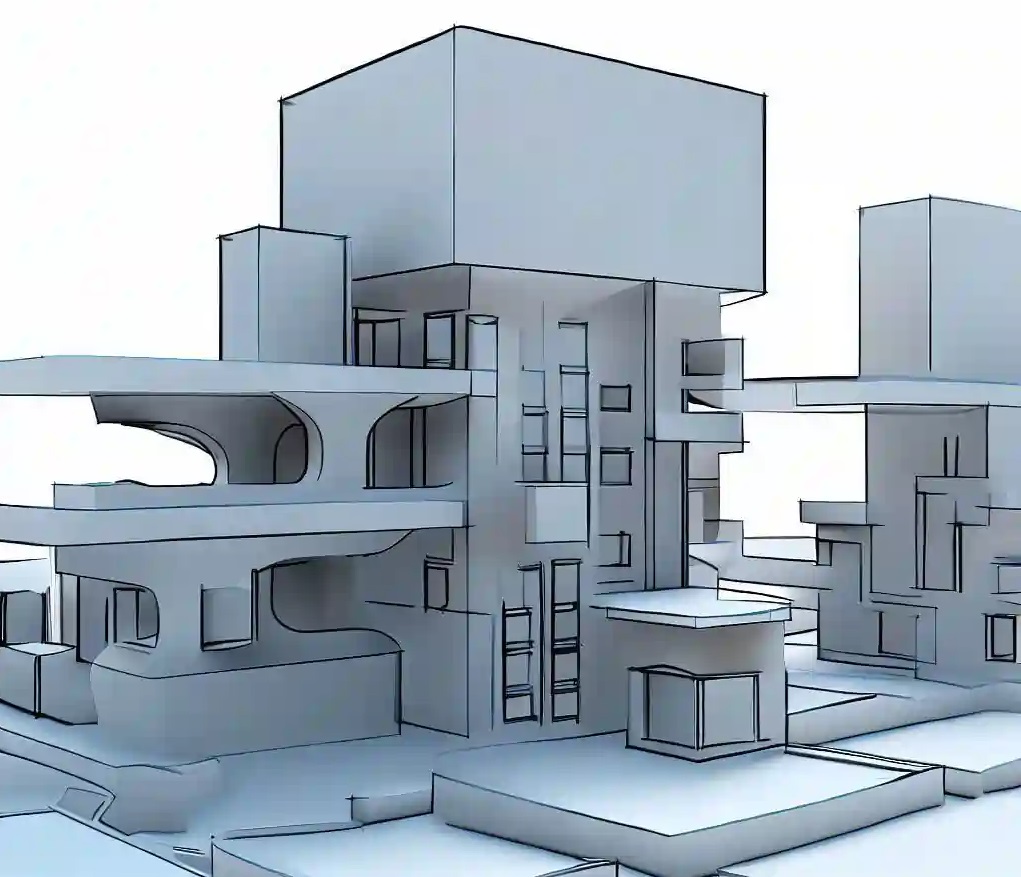The Ultimate Handbook for Formative and Summative Assessments in Rhino Assignment

This comprehensive guide will give you insightful tips and tricks to ace your Rhino assignments whether you're an architecture student or an aspiring designer. Rhino, a potent 3D modeling program, is crucial to the field of architecture, and success depends on your ability to effectively communicate your expertise. In the context of Rhino assignments, we will discuss formative and summative assessment concepts throughout this manual. You can track your development, pinpoint areas for improvement, and establish a solid foundation in using Rhino with the help of formative assessments, which include peer feedback, instructor feedback, and self-assessment. Summative tests, on the other hand, are completed after a learning period and offer a general assessment of your Rhino proficiency. These tests require you to demonstrate your abilities and explain your design decisions through practical assignments and written reports. We'll offer you sound advice on how to complete your Rhino assignments. including regular practice, looking for additional resources, and attending workshops and webinars. You can improve your Rhino proficiency and succeed in your assignments by using these techniques and a growth mindset. So let's get started with this thorough guide and realize the full potential of the formative and summative evaluations in the Rhino assignment!

Formative Assessments
Your progress toward mastering Rhino assignments depends heavily on formative assessments. These ongoing assessments give you insightful feedback throughout the learning process, allowing you to monitor your development and spot areas where you can improve. There are many techniques used in the context of formative assessments to improve your comprehension of Rhino. Peer feedback encourages collaboration and enables you to learn from your classmates' various points of view, creating a positive learning environment. Instructors help you gain a better understanding of Rhino's features and functionalities by offering insightful feedback based on their experience. Additionally, self-assessment gives you the ability to critically evaluate your work, highlighting both your accomplishments and areas for improvement. These formative evaluations serve as stepping stones, giving you the tools you need to hone your abilities, broaden your knowledge, and establish a strong foundation for using Rhino successfully. You can improve your strategy, fill in any knowledge gaps, and develop the confidence necessary to succeed in your Rhino assignments by actively participating in formative assessments.
Peer Feedback
Peer feedback is one method that can be utilized in the formative assessment process for Rhino assignments. By showing your work to your classmates and soliciting their feedback, you can broaden your understanding of the topic at hand and pinpoint specific areas in which you could make improvements. This procedure encourages collaboration and helps to cultivate an atmosphere that is conducive to learning by providing a supportive setting in which individuals can discuss and share various methods of problem-solving.
Instructor Feedback
Feedback from the instructor is an additional important form of assessment. Your instructor will look over the Rhino assignments you've turned in and provide feedback based on their area of expertise as well as the learning goals the assignment was designed to accomplish. This feedback can bring to light both the strengths and weaknesses of your work, leading you to a deeper comprehension of Rhino's capabilities and assisting you in the development of your expertise.
Self-Assessment
Formative evaluations often include a section for students to evaluate themselves. It requires taking a critical look at your work, determining the aspects in which you excel, and pinpointing the areas in which you could use some work. When working on Rhino assignments, you can conduct a self-assessment either by comparing your work to predetermined benchmarks or by evaluating your progress about the learning objectives that were provided to you by your instructor.
Summative Assessments
Summative evaluations provide a thorough assessment of your general understanding and proficiency and mark the conclusion of your learning journey in Rhino assignments. Your ability to apply Rhino's features and principles in practical situations will be put to the test in these important exams. You must demonstrate your abilities in practical assignments by designing architectural models, building intricate structures, or providing in-depth visualizations. It is essential that you carefully examine the assignment brief, adhere to all instructions, and show that you are an expert with Rhino's tools and functionalities. Additionally, written reports give you the chance to express your design preferences, clarify technical details, and demonstrate your comprehension of architectural principles. You can more effectively convey your ideas by writing reports that are clear, succinct, and well-structured and that are supported by visual aids like annotated screenshots or diagrams. A thorough knowledge of Rhino's capabilities, meticulous planning, and attention to detail is essential for success in summative assessments. You can complete summative assessments by using efficient strategies and making use of the knowledge you've acquired throughout your learning process. This will allow you to show off your command of Rhino and make an impression on the people evaluating your performance.
Practical Assignments
Practical assignments are a common component of summative assessments in Rhino. These assignments require you to demonstrate your competence in a setting that is as close to the real world as possible. The completion of these assignments may require the creation of architectural models, the assembly of intricate structures, or the demonstration of a detailed visualization of a structure. It is imperative that you carefully read and comprehend the assignment brief, that you adhere to the instructions precisely, and that you demonstrate your proficiency in utilizing Rhino's tools and functionalities if you wish to achieve success in these evaluations.
Written Reports
As a part of your summative assessments, you may come across written reports in addition to the practical assignments you are responsible for completing. Your ability to articulate your design choices, explain the technical aspects of your work, and demonstrate your understanding of the architectural principles at play can all be demonstrated through the use of these reports. When you are putting together written reports for Rhino assignments, you should make sure that your writing is unambiguous, brief, and well-structured. Enhance your explanations by utilizing the appropriate terminology and providing visual aids, such as screenshots or diagrams that have annotations added to them.
Tips for Excelling in Rhino Assignments
There are several important guidelines and tactics to keep in mind if you want to excel at Rhino assignments and produce exceptional results. The most important thing is to practice frequently. Set aside regular time to work on Rhino projects, discover new features and tools, and try out different design methods. You can improve your overall proficiency and gain a thorough understanding of the software by immersing yourself in regular practice. Additionally, look for resources outside of your coursework. Online forums, video courses, and tutorials can offer insightful advice on how to master Rhino. Use these tools to broaden your knowledge, pick up new skills, and keep up with the most recent developments in architectural design. Additionally, taking part in webinars and workshops can be extremely beneficial. These gatherings provide chances to pick the brains of subject matter experts, pick up novel viewpoints, and learn cutting-edge tactics. You can hone your abilities, increase your knowledge, and maintain your position at the forefront of architectural design trends by actively participating in these educational opportunities. Take these ideas to heart and use them to illuminate your path to success in your Rhino assignments.
Practice Regularly
Developing your skills in Rhino requires consistent practice. This is essential. Make sure that you schedule a specific time each week to work on projects using Rhino, experiment with various tools, and investigate new features. The more comfortable you are with the software, the more self-assured you will feel about your ability to complete assignments in a way that is both timely and accurate.
Seek Additional Resources
Find resources that go beyond the requirements of your Rhino class to broaden your understanding of the program. There are a great number of online tutorials, discussion forums, and video courses available, all of which can provide useful insights and pointers on how to master the software. Make the most of these resources to expand the scope of your understanding and improve the quality of your abilities.
Attend Workshops and Webinars
A wide variety of architectural organizations and software providers host workshops and webinars that center on Rhino and other topics associated with the program. These events offer the chance to pick the brains of seasoned professionals in the field, explore new vantage points, and become familiar with cutting-edge methods. Your expertise can be significantly improved, and you can stay abreast of the most recent developments in architectural design if you take part in events like these.
Conclusion
Finally, mastering formative and summative evaluations in Rhino assignments is a journey that needs commitment, practice, and a growth mindset. You can continuously develop your abilities and lay a solid foundation in Rhino by actively participating in formative assessments, utilizing peer feedback, instructor guidance, and self-assessment. Similar to how you can demonstrate your proficiency and excel in your assignments by using effective strategies for summative assessments, such as careful planning, attention to detail, and seeking feedback. Keep in mind to apply the advice and best practices offered in this manual, to be curious, and to be open to lifelong learning. You can confidently navigate the world of Rhino assignments, unleash your creative potential, and leave a lasting impression in the field of architecture by being persistent and dedicated to excellence.